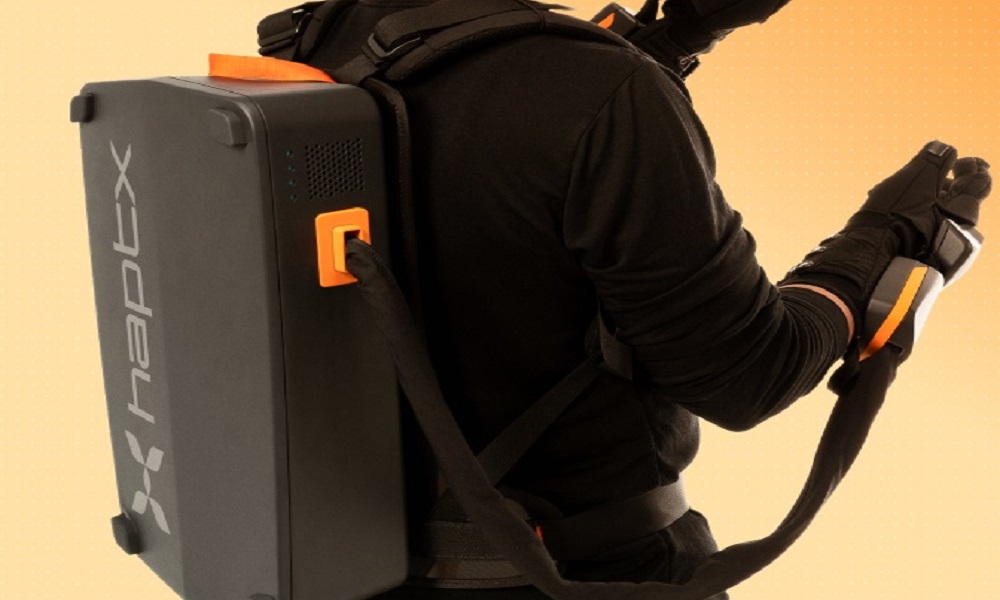In the ever-changing world of games, technology keeps pushing the limits to make experiences more immersive and real. One of these is haptic Feedback technology, which adds a sense of touch to games. Haptic feedback makes games more fun by imitating touch through vibrations, pressures, and textures. This gives players a higher level of interest and sensory experience. This article will go into the world of haptic technology in gaming, describing how it works, what it can be used for, and how it changes the way you play.
Understanding Haptic Feedback Technology

Haptic Feedback technology, also called haptics, is based on the study of touch and how things feel when you touch them. It uses mechanical vibrations or movements to simulate the feeling of touch and give users input. In video games, haptic technology tries to recreate actual sensations of touch to make the player feel more connected to the simulated world.
Haptic Feedback Technology in Gaming
Haptic input refers to how a device or gamepad makes you feel when something happens or you do something in a game. It makes the game more immersive by giving the player sensory input that matches their actions in the game. There are many ways to feel haptic feedback Technology, such as:
- Vibration: Vibration motors are incorporated into controllers or handheld devices. These controllers control vibrations to simulate different feelings, like the rumble of a car, falling, or the feeling of footsteps.
- Force Feedback: Force feedback involves pressure and pull sensations. These mechanisms exert forces on the player’s hands or fingertips, in response to on-screen actions. For example, For example, a racing car needs resistance for the brake.
- Surface Texture Simulation: Some haptic technologies employ specialized touch surfaces that can dynamically change their texture or provide localized vibrations to simulate the feel of various surfaces or objects. This lets players feel things like how rough or smooth something is, or even how raindrops feel.
Impact of Haptic Feedback Technology on Gaming Experience
The incorporation of haptic feedback technology into gaming has a significant influence on the quality of the gaming experience. It makes players feel more like they are a part of the virtual world. It enhances immersion, making players feel more connected to the virtual world. Here are some key benefits:
- Realistic and Engaging: Haptic feedback technology connects the player to the game, making the experience more real and engaging. When players feel the effects of actions, like combat or physical collisions, they become more cognitively involved and feel more like they are in the game.
- Improved Spatial Awareness: Haptic feedback can help players get a better sense of where things are in the virtual world. Players can navigate and interact with the game world more intuitively by providing physical cues and vibrations that correspond to in-game elements or objects.
- Enhanced Gameplay Mechanics: Haptic feedback technology enhances gaming mechanics. It can give players subtle hints or vibrations that tell them what to do, like telling them where attacks are coming from or when important things happen in the game. This additional layer provided by this layer has the potential to speed up response times and enhance strategic decision-making.
- Accessibility and Inclusivity: Haptic feedback technology also helps games be more approachable and include more people. It improves the gaming experience for players. It is also very helpful for those who have visual impairments.
Haptic Feedback Technology Examples
Various gaming devices and platforms have added haptic technology, which gives players tactile feedback and makes them feel more immersed in the game. Here are some examples of haptic technology in gaming:
Console Controllers
Several popular gaming consoles, like the PlayStation and Xbox, have built-in controllers for haptic feedback technology. For example, The PlayStation DualSense controller for the PlayStation 5, includes advanced haptic motors and adaptive triggers to provide tactile feedback that corresponds to in-game actions. Players can also feel the tension of drawing a bowstring or the rumble of driving through rough terrain.
Handheld Devices
Haptic feedback technology has also found its way into mobile gaming. Smartphones and tablets equipped with haptic motors can deliver sensations to enhance the gaming experience. Mobile racing games with this technology let players feel even engine vibrations and collisions.
Virtual Reality (VR) Controllers
Haptic feedback technology mechanisms are commonly used in virtual reality controllers to simulate interactions with virtual objects. Moreover, the vibrations and force feedback in these controllers makes it feel like you can touch and move things in the virtual world. When players reach out to grab a virtual object, they can feel a sense of resistance or feedback that enhances the illusion of presence.
Gaming Chairs
Some gaming chairs integrate haptic technology to provide a more immersive experience. These chairs use built-in actuators to generate vibrations and motions that synchronize with in-game events, such as explosions or impacts. When a player tries to grab a virtual object, they can feel resistance or feedback that makes it seem like the object is really in their hand. The player feels the vibrations through his or her body.
VR Gloves
Advanced VR Gloves are also entering and gaining popularity in gaming. These gloves also have a number of sensors and actuators that work together to give each finger precise input. Players can feel a sense of touch in the virtual world through the simulation of touch, pressure, and textures when interacting with virtual objects.
Haptic Vests and Suits
Vests or suits with haptic technology have many embedded actuators. These actuators are strategically placed all over the garment to give a fantastic experience. These actuators also have the ability to simulate a wide variety of sensations, including impacts, vibrations, and even localized pressure.
These are just a few of the many gaming devices that feature haptic technology. As technology keeps getting better, we can expect even more creative uses of haptic feedback, which will make games even more immersive and sensory.
Conclusion
The advent of haptic technology and the incorporation of tactile sensations into video games has completely changed the experience for players. Haptic feedback improves realism, spatial awareness, and overall immersion by using vibrations, forces, and textures. This results in gaming experiences that are more engaging and captivating for the player. The line between the virtual and real worlds of gaming will become increasingly blurry as technology develops, allowing for more realistic and nuanced tactile experiences through haptic systems.
Featured Image Credit: Photo by Tima Miroshnichenko



[…] Revolutionizing Gaming: The Transformative Impact of Haptic Feedback Technology […]
[…] haptic feedback adds to the immersive nature of spellcasting. As you cast spells, you’ll experience distinct sensations through the […]
[…] with beats for a synesthetic journey. Vibrant visuals and music fuse into a captivating experience. Haptic feedback adds a tactile layer, immersing you […]
[…] The game has more than 400 cars 🚘, 34 tracks 🛣️, and different ways to race 🏁. The graphics in the PS5 version of the game are better 📺. It also loads faster and supports haptic input 🕹️. […]
[…] the popular Oculus Quest 2 and Valve Index 🚀. This means many VR fans can enjoy the vest’s haptic feedback 🤖. The TactSuit X40 seamlessly integrates with supported games and platforms 🌐, letting […]
[…] Feel Every Game: Haptic Feedback’s Impact on Competitive Gaming […]
[…] Haptic feedback 🎮 is like a special way your controller talks to you through vibrations 📳. It’s a bit like your phone buzzing 📞 when you get a message ✉️, but it’s used in games 🎮 to make your experience more real 🌟 and exciting 🎉. […]